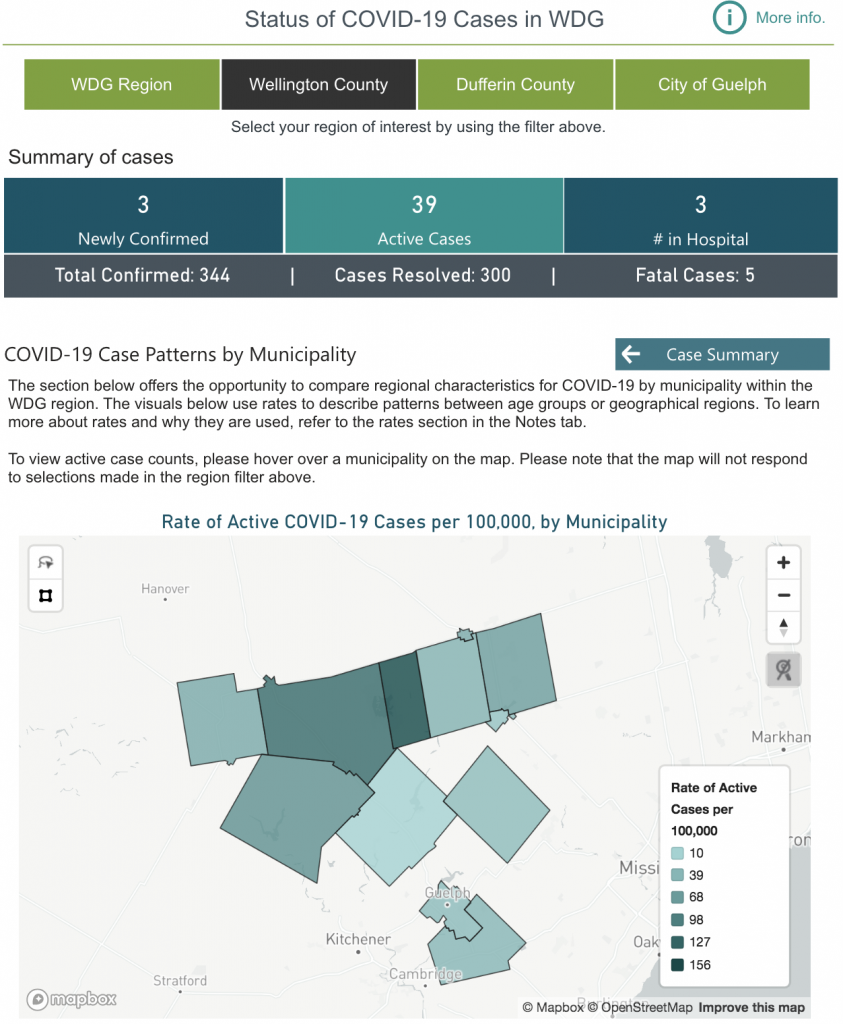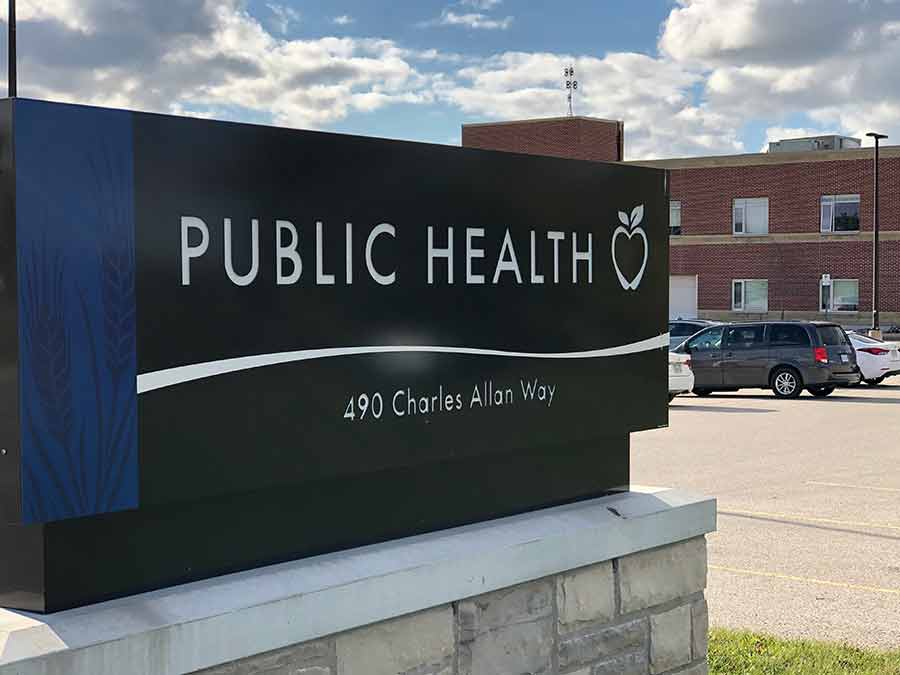WELLINGTON COUNTY – Public health’s first release of COVID-19 cases by lower-tier municipality shows, as some suspected, a concentration of cases in north Wellington.
On Dec. 1, Wellington-Dufferin-Guelph Public Health’s (WDGPH) online COVID-19 dashboard showed about three quarters of the county’s cases (29 of 39) are in Wellington North, Mapleton and Minto.
The breakdown for active cases is:
- three in Centre Wellington;
- four in Erin;
- zero in Guelph-Eramosa:
- nine in Mapleton;
- five in Minto;
- three in Puslinch; and
- 15 in Wellington North.
“This is a real wake up call. I urge all residents and business owners to follow public health guidelines,” stated Minto Mayor George Bridge in a Dec. 1 joint statement from the three mayors in north Wellington.
“To date, we have been educating those not in compliance. Enforcement is coming for those not in compliance.”
Bridge noted that on Oct. 20, Wellington County had zero COVID-19 cases, and within a month it had the highest cases in the region and was “pulling” Dufferin and Guelph “into the red (control) level.”
As of Dec. 1, The WDGPH region remains in the province’s orange (restrict) COVID-19 alert level, but several officials have suggested that could change soon if current trends continue or worsen.
“Unlike much of the rest of [WDGPH], the COVID numbers for Wellington North, Minto and Mapleton are consistent with the red (control) level,” stated Wellington North Mayor Andy Lennox, noting the red level is just one step from the grey (lockdown) level.
“We need to continue to be vigilant … (and) follow all public health guidelines and gather only with those you live with.”
Mapleton Mayor Gregg Davidson stressed nobody wants another lockdown.
“We need to protect our most vulnerable residents,” stated Davidson.
“We need to keep our businesses open and our children in school … The sooner we can get the virus under control, the sooner we can return to normal life.”
Gatherings
The three mayors stressed “no one specific community group is solely responsible for the spread of the virus,” an obvious reference to recent public health orders that shut down Old Order Mennonite churches and schools in northern Wellington.
Municipal officials say “contact tracing investigations reveal that social gatherings, large and small, are responsible for the majority of cases.”
They noted COVID-19 “is circulating across the county,” with cases directly linked to:
- private indoor gatherings of family and friends;
- garage parties;
- birthday parties;
- play dates and sleepovers;
- weddings; and
- dinner parties.
Cases
In total, Wellington County had just three new cases on Dec. 1, for a total of 39 active cases and three people in hospital.
Dufferin County had 10 new cases, 27 active cases (the most – eight – in Orangeville) and two in hospital.
Guelph had 27 new cases, 50 active cases and one person in hospital.
On Nov. 30, the WDGPH website indicated there were 76 new cases (26 in Wellington), marking a new high for cases reported from Friday to Sunday.
The previous weekend the region reported 75 new cases.
New WDGPH reporting system
Prior to Dec. 1, WDGPH did not release case data for each municipality, despite repeated requests for that information from residents, the media, municipal officials and others.
On Nov. 24 public health officials suddenly changed course, announcing more detailed data would be released starting Dec. 1.
WDGPH spokesperson Danny Williamson said adding case data for each municipality on the online dashboard “is an important tool to help the public understand the current COVID picture in our region.”
However, he added, “It’s very important that people understand that it’s a snapshot and can’t give us the total picture.”
Williamson explained the case data is based on positive lab-confirmed tests and therefore does not capture people who have not yet been tested or who have COVID-19 with no symptoms.
“That means we all must remain vigilant,” he told the Advertiser.
“COVID is circulating actively in the region and remains a risk to all of us.”
In addition to the geographical breakdown of cases, the WDGPH dashboard also now includes:
- standardized rates (per 100,000 residents) across the region;
- the weekly rate per 100,000 by age groups;
- updates to the weekly reported cases graphic to include breakdown by case status
- updates to the testing tab to display the intersection of testing and case rates by municipality.
Public Health has also developed an anonymous survey to track the transmission of COVID-19.
Officials say the survey will “further our understanding of where the greatest risks exist in the community and target key interventions to keep residents of the region safe.”
The survey can be found at https://survey.wdgpublichealth.ca/surveys/?s=K79EFJ33WM.

WDGPH image (Dec. 1, 2020)




